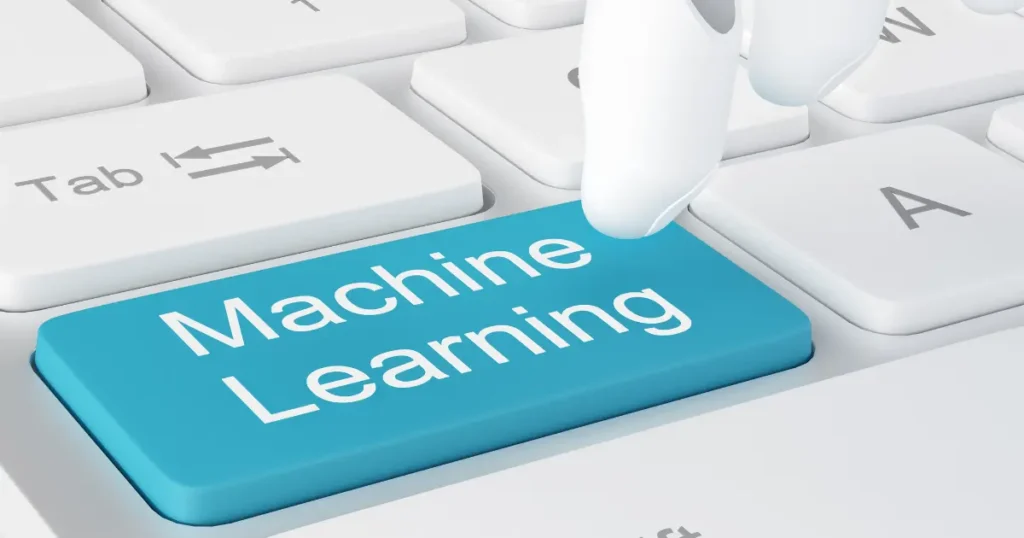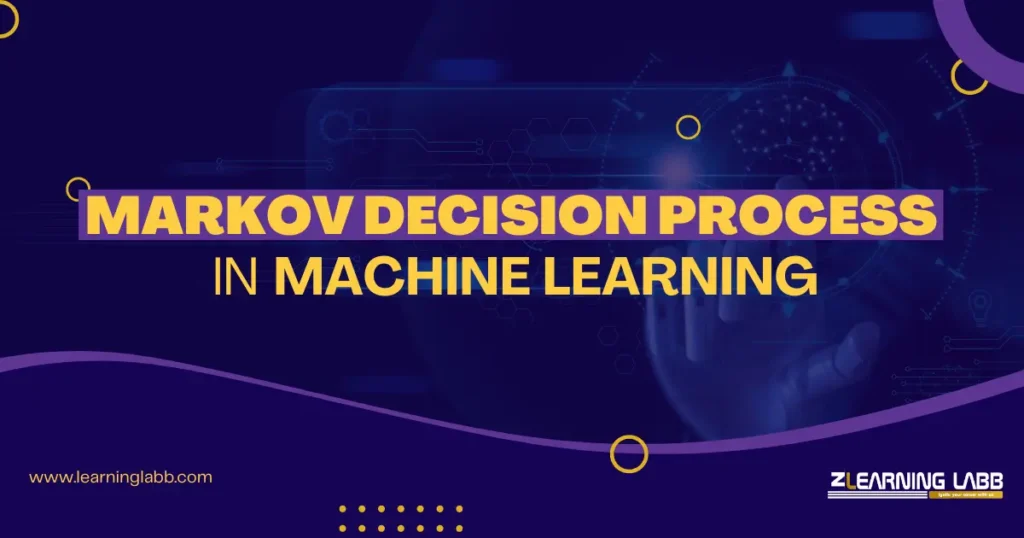Markov Decision Process In Machine Learning: How do machines make decisions when the outcome is uncertain? How can artificial intelligence (AI) choose the best action when multiple possibilities exist? The answer lies in Markov Decision Process (MDP), a fundamental concept in machine learning and reinforcement learning.
The Markov Decision Process in Machine Learning provides a structured way for machines to take actions in an environment while optimising long-term rewards. MDP is widely used in areas like robotics, finance, self-driving cars, and gaming AI.
This blog will cover the following:
- What is Markov Decision Process?
- What is the full form of MDP?
- Components of Markov Decision Process
- Competitive Markov Decision Processes
- Continuous State Markov Decision Process
- Deterministic Markov Decision Process
- Limitations of Markov Decision Process
By the end of this blog, you will have a clear understanding of how MDP works and how it applies to real-world AI problems.
What is Markov Decision Process in Machine Learning?
A Markov Decision Process (MDP) is a mathematical model used in machine learning to describe decision-making in situations where outcomes are partly random and partly under the control of a decision-maker.
MDP is widely used in reinforcement learning, where an agent interacts with an environment and learns to make optimal decisions based on rewards and penalties.
What is the Full Form of MDP?
The full form of MDP is Markov Decision Process. It is named after Andrey Markov, a Russian mathematician known for his work on probability theory.
MDP follows the Markov Property, which states that the future state of a system depends only on its present state and not on its past states.
For example, in a chess game, the best move depends only on the current board position and not on previous moves.
Read More: Performance Metrics in Machine Learning: A Complete Guide

Components of Markov Decision Process
The Markov Decision Process in Machine Learning consists of the following five key components:
1. States (S)
A state represents the condition of the environment at any given time. For example:
- In robotics, the state could be the robot’s position.
- In self-driving cars, the state could be the speed and location of the vehicle.
2. Actions (A)
An action is a decision made by the agent. Each state has a set of possible actions that can be taken.
- In chess, the action could be moving a piece.
- In video games, the action could be jumping or shooting.
3. Transition Probability (P)
This represents the probability of moving from one state to another after taking a specific action.
- If a self-driving car accelerates, what is the probability it will be in a different lane in the next moment?
4. Reward Function (R)
The agent receives a reward after performing an action. The goal is to maximise total rewards over time.
- In a game, winning a level gives a high reward, while losing a life gives a negative reward.
5. Policy (π)
A policy is a strategy that the agent follows to decide the best actions in each state.
- In an AI-driven stock market trading system, the policy determines whether to buy, sell, or hold stocks based on market conditions.
Types of Markov Decision Processes
Different variations of MDP exist based on their characteristics and applications.
1. Deterministic Markov Decision Process
In a Deterministic Markov Decision Process, the next state is completely predictable based on the current state and action. There is no randomness involved.
- Example: In a chess game, moving a piece always leads to a specific board configuration.
2. Stochastic Markov Decision Process
In contrast to a deterministic MDP, a stochastic MDP introduces randomness in state transitions.
- Example: In weather prediction, taking an action (like planting crops) does not guarantee the same weather conditions in the future.
3. Competitive Markov Decision Processes
In Competitive Markov Decision Processes, multiple agents interact in an environment, competing to maximise their rewards.
- Example: In multi-player strategy games, players make decisions based on other players’ moves.
4. Continuous State Markov Decision Process
A Continuous State Markov Decision Process deals with an infinite number of possible states instead of discrete states.
- Example: In self-driving cars, speed and location are continuous variables, making the decision-making process more complex.

Applications of Markov Decision Process in Machine Learning
The Markov Decision Process in Machine Learning is widely used in various fields, including:
- Reinforcement learning – Training AI to make better decisions in dynamic environments.
- Robotics – Helping robots make optimal movements and actions.
- Healthcare – Predicting disease progression and recommending treatments.
- Finance – Making stock market predictions and investment decisions.
- Autonomous vehicles – Enabling self-driving cars to navigate safely.
- Gaming AI – Developing intelligent NPCs (Non-Player Characters) in video games.
Limitations of Markov Decision Process
Despite its effectiveness, MDP has some challenges:
1. State Space Explosion
When there are too many states, computation becomes difficult. This is a problem in real-world applications like complex robotics.
2. Assumption of Full Observability
MDP assumes that the agent has complete knowledge of the environment. However, in real life, AI often works with incomplete data.
3. High Computational Cost
Solving MDPs requires powerful computing resources, which can be expensive.
4. Dependency on Accurate Reward Function
If the reward function is not well-defined, the AI may not learn the right policy.
How to Learn Markov Decision Process and Machine Learning?
If you are interested in learning more about MDP in Machine Learning, enrolling in a data science or AI course can be beneficial.
At Ze Learning Labb, students can choose from:
- Data Science Course – Covers MDP, AI, and machine learning concepts.
- Data Analytics Course – Teaches how to apply MDP in business decision-making.
- Digital Marketing Course – Uses AI-driven decision processes for marketing strategies.
Course Fees
The course fees depend on the program. Typically, data science and AI courses range from ₹50,000 to ₹2,00,000 in India. But at ZELL, we have financial assistance and EMI options, where you can learn without the financial stress pulling you down. Moreover, our course fees are competitive compared to our contemporaries. For those looking for a structured learning approach, Ze Learning Labb offers hands-on training and expert faculty guidance.

On A Final Note…
The Markov Decision Process in Machine Learning provides a structured way to solve decision-making problems in uncertain environments. It is widely used in reinforcement learning, robotics, finance, and AI-driven systems.
For those looking to gain expertise in MDP, AI, and machine learning, enrolling in a data science or AI course is a great step forward.
Explore the Data Science programs at Ze Learning Labb to advance your career in artificial intelligence.





